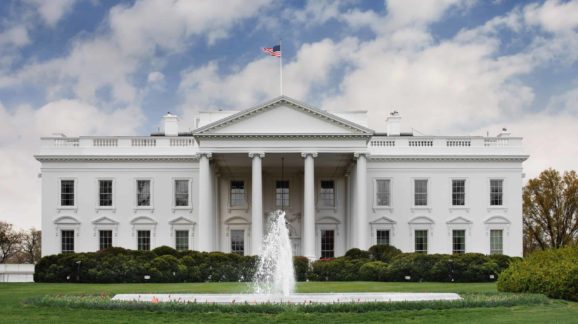Barack Obama’s Tower of Power
Tourists have long marveled at the Arc de Triomphe near the center of Paris. That Napoleonic monument revived an ancient Roman tradition: After a great victory, a Roman general would have a ceremonial archway built in advance of his arrival and then pass under it with a train of soldiers, trophies, and children tossing garlands in his wake. Few symbols are more emblematic of the late Roman Republic. And few symbols are more emblematic of what David Reaboi calls “late republic nonsense” than the Obama presidential center, which is due to break ground next week — unless a major federal lawsuit stops it first.
The transition from the modest presidential libraries of yesteryear to the grandiose complexes of today was fairly quick. Since Herbert Hoover’s time, university campuses had hosted presidential libraries as special collections, usually for illustrious alumni, for example Lyndon B. Johnson’s at the University of Texas and Gerald Ford’s at the University of Michigan. Both Bushes graduated from Yale, which is obviously not an option for a Republican, so theirs are hosted by Texas A&M University and Southern Methodist University, respectively. Richard Nixon’s presidential library is located on his family’s own land in Yorba Linda, Calif. Ronald Reagan’s more sprawling presidential center is in Simi Valley, Calif., though still on formerly private land, privately acquired.
Not surprisingly, Bill Clinton’s more grandiose idea required a significant expenditure of government funds. His presidential center is on the Little Rock riverfront right next to downtown, in a former warehouse district which was condemned and expropriated for the purpose by the city and donated by it to the Clinton Foundation. His presidential center is big enough to host a public-policy school of the University of Arkansas (rather than the other way around, as would have been more traditional) and is a major tourist attraction.
Now, Barack Obama is building the most triumphal presidential center yet. The plans include a tower that, like the Arc de Triomphe, would rise above everything else in its neighborhood and dominate its landscape. (The presidential museum would actually be about ten stories taller than Napoleon’s Paris monument).
Fittingly for a celebration of President Obama, the story of his presidential center has been one of cutting corners on legal technicalities, identifying the commonweal with himself, and treating environmental regulations as if they weren’t meant to apply to him. Like so many of the actions he took as president, the plans for the presidential center have triggered multiple lawsuits.
The choice of location has proven the most controversial. Jackson Park, near Chicago’s south side, is on the National Register of Historic Places. It is one of the masterworks of Frederick Law Olmsted, who designed it just a few years after the end of the Civil War. (Olmsted’s other works include Central Park in New York City, Forest Park in St. Louis, and the beautiful Belle Isle Park in the Detroit River). The presidential center would take up about 20 acres in Jackson Park’s 500 acres, but the impact will be much greater.
Jackson Park contains several large lagoons, so the presidential center would take up a much larger proportion of the park’s usable land area. And it will require completely rerouting the traffic through the park, changing the park’s configuration, and tearing up miles of roads and hundreds of trees, all of which nearly doubles the project’s actual footprint.
The choice of location triggered a lawsuit by neighborhood residents and the organization Protect our Parks. One of the lawyers representing the plaintiffs is Richard Epstein, who spent most of his career teaching at the University of Chicago Law School. (Epstein, a friend and sometime collaborator of mine, has been a frequent Obama critic.)
In typical Chicago fashion, the conveyance of the land was more than a little shady. Because the Chicago Park District (the longtime “owner” of Jackson Park) is prohibited by law from conveying any part of a city park to private parties, the city of Chicago — in the person of Obama’s former chief of staff, then-Chicago mayor Rahm Emanuel — arranged for the Park District to convey the site to it. Then the City entered into a “use agreement” with the Obama Foundation, through which they in effect granted a 99-year lease on the site, for the good and valuable consideration of $10. But they couldn’t call it a “lease” because that would be a conveyance under Illinois law, and Illinois law provides:
Any park district owning or holding any real estate is authorized to convey such property to a nongovernmental entity in exchange for other real property of substantially equal or greater value as determined by 2 appraisals of the property and of substantially the same or greater suitability for park purposes without additional cost to such district.
Read the full article at National Review.
